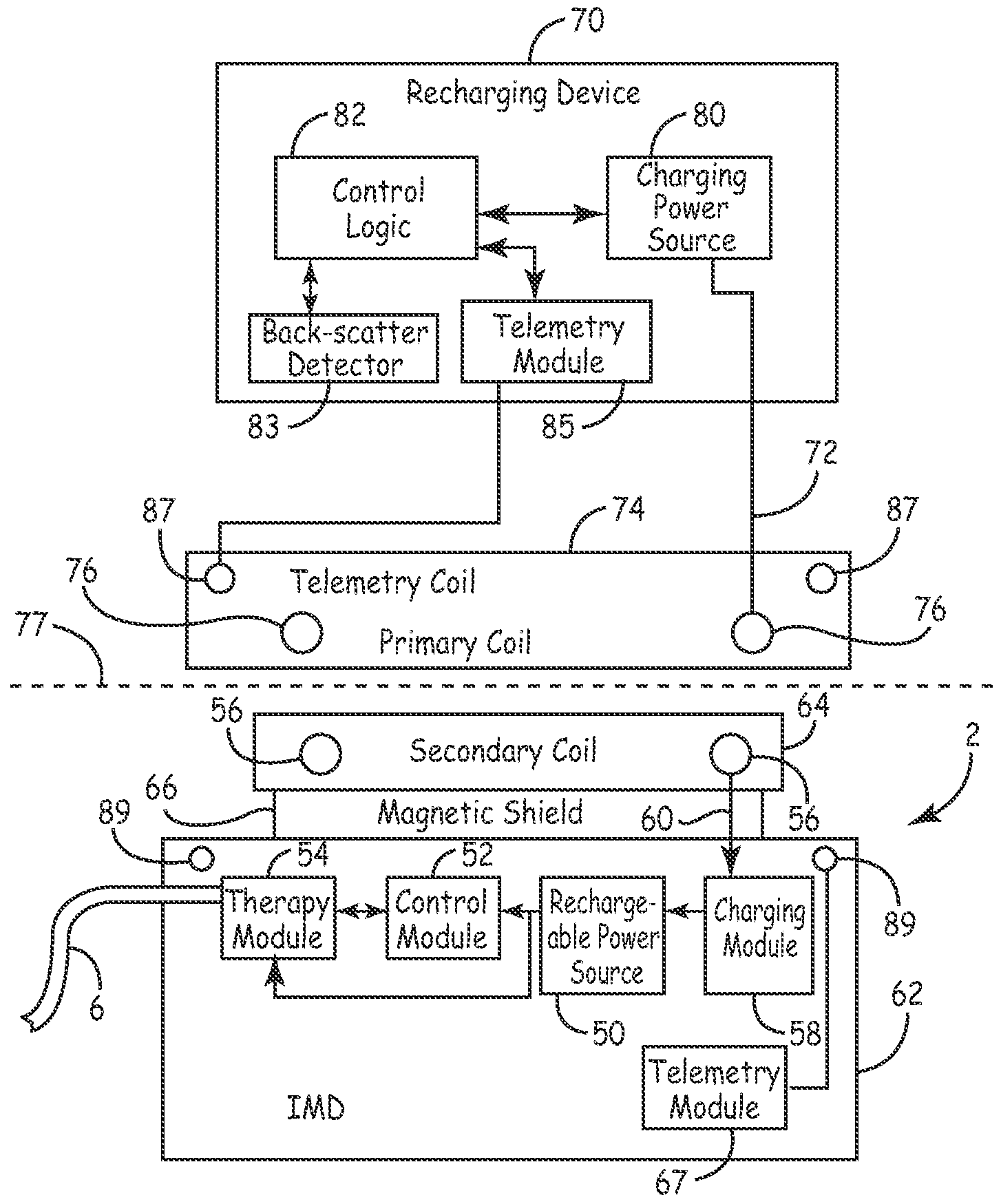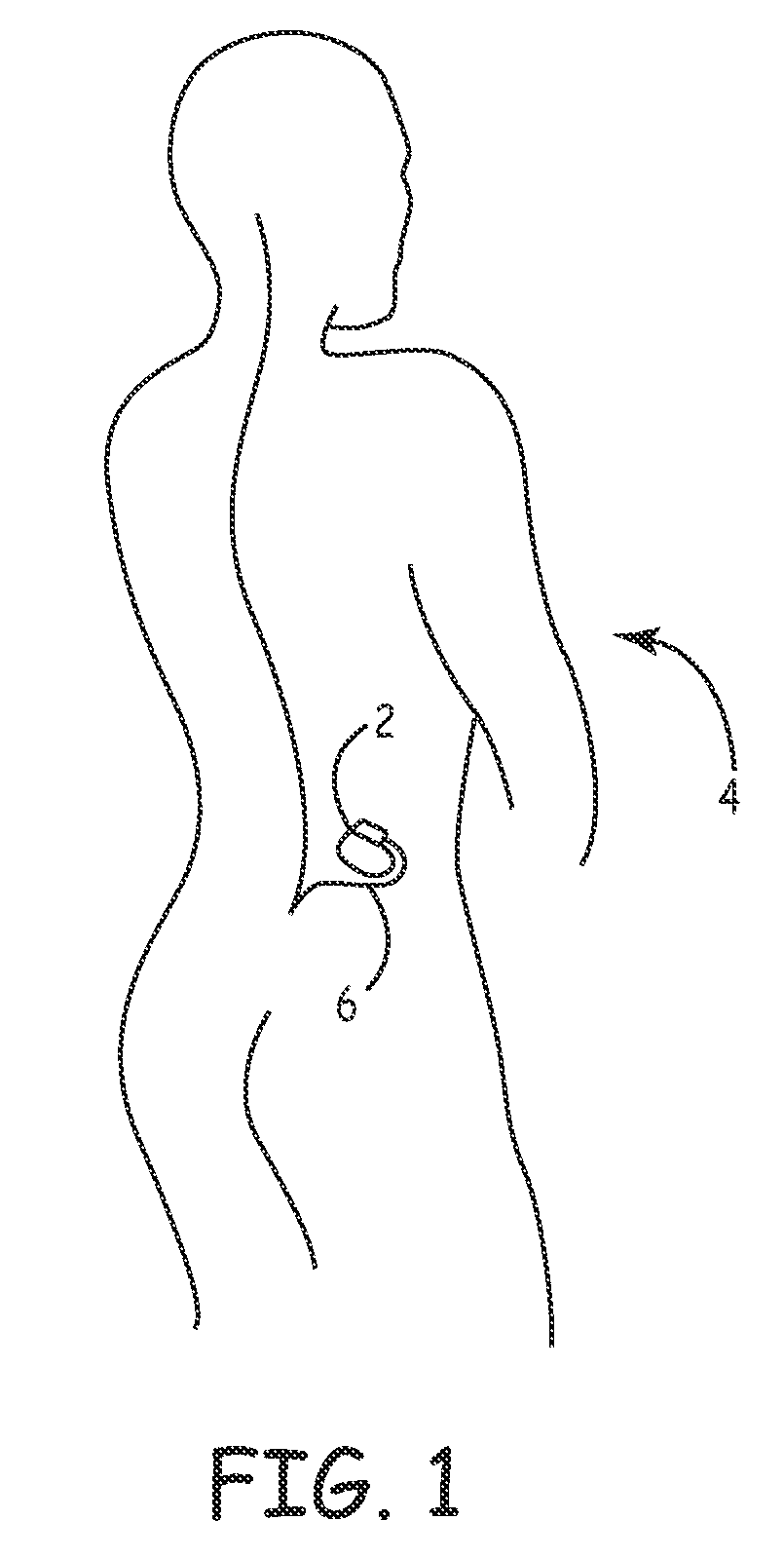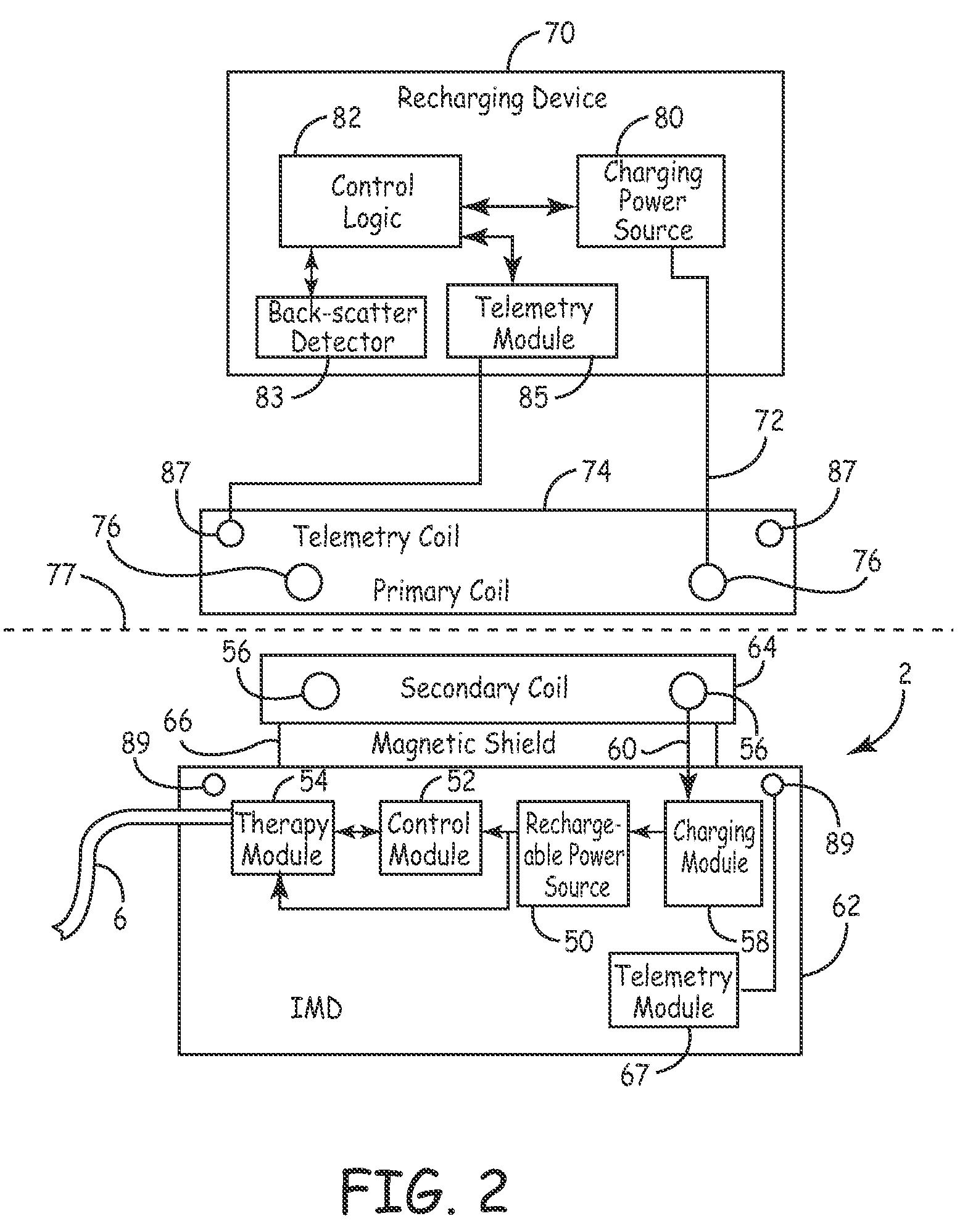Hybrid rectification for recharging an implantable medical device
a medical device and hybrid technology, applied in the field of hybrid rectification of recharging an implantable medical device, can solve the problems of large inconvenience of continuously coupling patients to an external power source for therapy, disadvantageous electric wires perforating the skin, and large risk of infection, so as to increase the efficiency of recharging the rechargeable power source. the effect of a ra
- Summary
- Abstract
- Description
- Claims
- Application Information
AI Technical Summary
Benefits of technology
Problems solved by technology
Method used
Image
Examples
Embodiment Construction
[0032]The current disclosure provides mechanisms and techniques for optimizing the amount of energy that is harvested during a recharge session by an Implantable Medical Device (IMD) that includes a rechargeable power source. During recharge, a primary coil of an external recharging unit may be positioned close to, or in contact with, the skin of the patient in the vicinity of the IMD. Inductive or radio frequency (RF) energy may be transferred by the primary coil and received by a secondary coil that is located within, or that is otherwise associated with, the IMD. The received energy may then be used to replenish the rechargeable energy source (e.g., rechargeable battery) that is powering the IMD.
[0033]The efficiency with which the secondary coil may receive and harvest the energy may depend on various factors associated with the implant scenario. For instance, based on the body type of the patient and / or the type of therapy that is being delivered by the IMD, the IMD may be impla...
PUM
 Login to View More
Login to View More Abstract
Description
Claims
Application Information
 Login to View More
Login to View More - R&D
- Intellectual Property
- Life Sciences
- Materials
- Tech Scout
- Unparalleled Data Quality
- Higher Quality Content
- 60% Fewer Hallucinations
Browse by: Latest US Patents, China's latest patents, Technical Efficacy Thesaurus, Application Domain, Technology Topic, Popular Technical Reports.
© 2025 PatSnap. All rights reserved.Legal|Privacy policy|Modern Slavery Act Transparency Statement|Sitemap|About US| Contact US: help@patsnap.com



